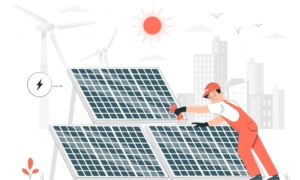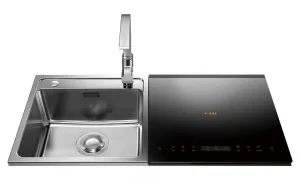Introduction
In today’s dynamic business landscape, effective supply chain management is pivotal for gaining a competitive edge. With the growing complexity of supply chain networks, real-time information and insights are essential. This has led to the emergence of “Control Towers” in supply chain management, acting as centralized hubs offering end-to-end visibility and control.
Exploring Control Towers in Supply Chain Management

1. Defining Control Towers
A control tower in supply chain management is a centralized platform that aggregates data from various systems, providing real-time tracking and actionable insights. This enables informed decision-making and swift corrective actions, optimizing the entire supply chain.
2. Key Components and Technologies
Modern control towers utilize advanced technologies like artificial intelligence, machine learning, and predictive analytics. These components enable proactive decision-making and efficient supply chain operations.
3. Implementing a Control Tower
Implementing a Supply Chain Control Tower (SCCT) involves critical steps:
– Setting Business Goals: Identifying areas for optimization within supply chain processes.
– Choosing the Right Technology: Selecting scalable, flexible technology that integrates seamlessly with existing IT infrastructure.
– Data Integration: Standardizing and cleansing data from various sources to provide real-time visibility.
– Establishing Workflows and Processes: Integrating workflows into existing business processes for smooth operations.
– Training and Change Management: Training employees on technology usage and new workflows.
– Continuous Improvement: Monitoring performance and identifying areas for enhancement.
Control Towers in Action: Enhancing Supply Chain Efficiency
1. Inventory Management
By monitoring inventory levels and demand patterns in real-time, control towers optimize inventory and reduce carrying costs.
2. Logistics Optimization
Real-time monitoring allows for optimized delivery routes, reduced transportation costs, and improved on-time delivery rates.
3. Supplier Management
Control towers track supplier performance metrics, facilitating prompt issue identification and resolution.
Maximizing Potential: The Future of Control Tower in Supply Chain Management
1. Environmental Benefits
Utilizing control towers leads to more efficient logistics, reducing the overall carbon footprint and contributing to a greener supply chain.
2. Cost Efficiency
By identifying inefficiencies and optimizing processes, control towers significantly reduce operational costs in the long run.
Conclusion
Control towers in supply chain management are indispensable tools in today’s fast-paced business environment. As technology continues to advance, integrating control towers into supply chain processes will be crucial for organizations aiming to stay ahead and thrive in the competitive landscape.





























